"Cherishing Little Steps - A Haven for Baby and Family Journeys"
Newborn Baby Bed
Are you ready to create the perfect sanctuary for your newborn? Look no further than the newborn baby bed.
It’s not just a place to sleep, but a symbol of comfort and security for both you and your little one.
In this article, we’ll guide you through choosing the right size bed, exploring different designs, ensuring safety, and making it cozy with bedding and accessories.
Get ready to embrace parenthood with confidence as we help you set up the ideal space for your precious bundle of joy.
Key Takeaways
- Consider the baby’s growth in the first few months
- Choose dimensions that provide comfort without feeling cramped
- Ensure the bed height is easily accessible for picking up and putting down the baby
- Look for a firm mattress that supports bone and muscle development
Choosing the Right Newborn Baby Bed Size
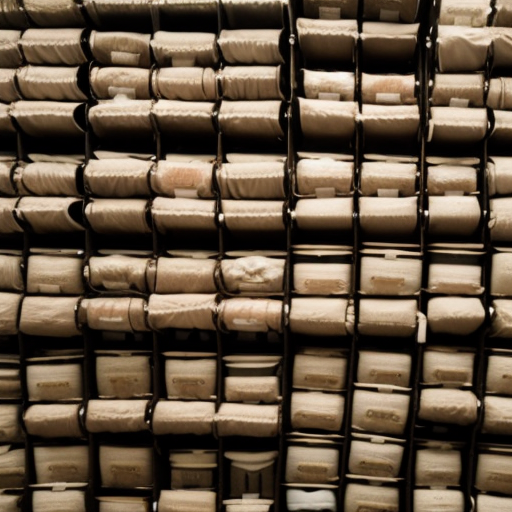
When choosing the right newborn baby bed size, it’s important to consider the baby’s growth in the first few months. Newborn baby bed safety is crucial for your little one, and finding the perfect fit is a key part of that.
The size of the bed should be chosen carefully to ensure comfort and safety. Firstly, you need to think about the dimensions of the bed. It should be large enough for your baby to lie comfortably without feeling cramped, but not too big that they could roll around and potentially get stuck between the mattress and sides. The height of the bed should also be considered, as it should be easily accessible for you to pick up or put down your baby without straining yourself.
Choosing the right mattress for a newborn baby bed is equally important. Look for a firm mattress that provides support for your baby’s developing bones and muscles. Avoid mattresses with excessive padding or softness as they can increase the risk of suffocation or Sudden Infant Death Syndrome (SIDS).
The Benefits of a Co-Sleeping Newborn Baby Bed
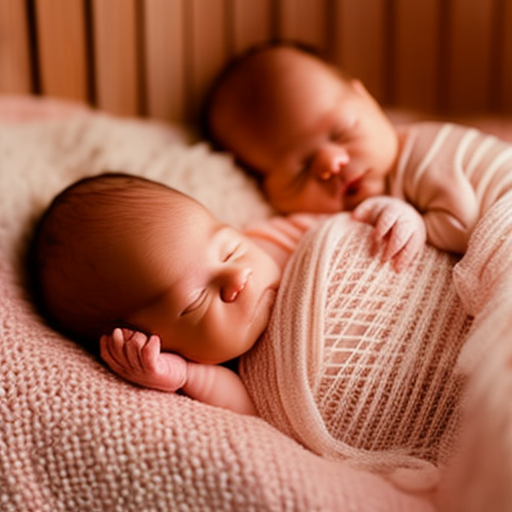
If you’re looking for a way to bond with your little one and make nighttime feedings easier, a co-sleeping bed can be a great option. Co-sleeping refers to the practice of sleeping close to your baby, whether it’s in the same bed or using a sidecar attachment.
There are several benefits to co-sleeping that make it an attractive choice for many parents. One of the main benefits is that it promotes bonding between you and your baby. Being physically close to your little one allows for more skin-to-skin contact, which has been shown to regulate their body temperature and promote breastfeeding. This closeness also helps babies feel secure and loved, leading to better sleep patterns.
Co-sleeping can also make nighttime feedings much easier. Instead of having to get out of bed and go to another room, you can simply reach over and nurse or bottle-feed your baby while staying comfortable in your own bed. This not only saves time but also helps both you and your baby fall back asleep more easily.
When practicing co-sleeping, safety is paramount. Make sure to follow these guidelines: ensure that the mattress is firm and free from pillows or blankets that could suffocate the baby; avoid smoking or drinking alcohol before bedtime; use a separate sleep surface if either parent is excessively tired or under the influence of medication; keep pets away from the sleeping area.
Overall, co-sleeping offers numerous benefits for both you and your little one. It fosters bonding, simplifies nighttime feedings, and provides comfort for everyone involved. Just remember to prioritize safety when considering this sleeping arrangement with your newborn baby bed.
Safety Considerations for Newborn Baby Beds
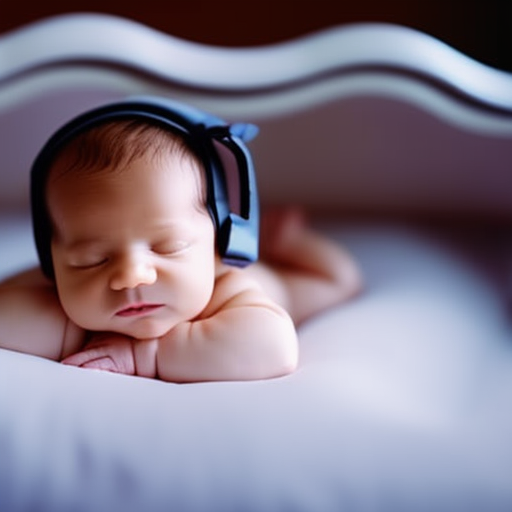
To ensure the safety of your little one, it’s important to follow these guidelines when using a co-sleeping arrangement.
Newborn baby bed safety standards should always be prioritized to provide a secure sleeping environment for your precious bundle of joy.
Firstly, make sure that the newborn baby bed meets all safety standards. Look for certifications such as ASTM or CPSC to ensure the product has undergone rigorous testing and meets industry requirements. Additionally, check for any recalls or warnings associated with the bed model you have chosen.
When setting up the newborn baby bed, avoid common mistakes that can compromise your child’s safety. Make sure that there are no loose bedding items such as blankets or pillows in the sleep area. These can pose suffocation hazards and increase the risk of Sudden Infant Death Syndrome (SIDS).
Furthermore, ensure that the mattress fits snugly into the bed frame without any gaps where your baby could get trapped. Use fitted sheets designed specifically for infant beds to prevent them from coming loose during sleep.
Remember to position the newborn baby bed away from any potential hazards such as curtains, blinds cords, or electrical outlets. Keep an eye out for other objects within reach that could potentially harm your little one.
Different Types of Newborn Baby Bed Designs
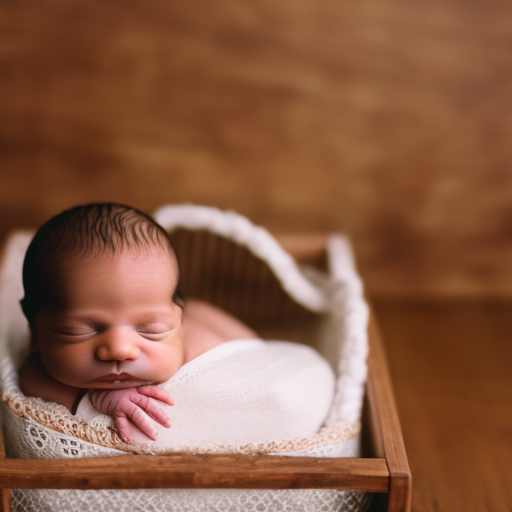
Choose a design that suits your style and meets safety standards for your little one’s sleeping arrangement. When it comes to newborn baby bed designs, there are a variety of options available. Here are three popular styles to consider:
-
Bassinet: A bassinet is a small, cozy bed that is perfect for newborns. It’s usually portable and can be placed next to your own bed for easy access during nighttime feedings. Bassinets often come in different styles, such as traditional or modern, allowing you to find one that matches your nursery decor.
-
Crib: A crib is a larger bed designed for babies up to two years old. It typically has high sides and sturdy construction to keep your little one safe while they sleep. Cribs come in various styles, such as standard cribs or convertible cribs that can later be transformed into toddler beds or even full-size beds.
-
Co-sleeper: If you prefer to have your baby close by while they sleep, a co-sleeper may be the right choice for you. These beds attach securely to the side of your own bed, creating a safe space for your baby while still allowing easy access for feeding and comforting.
When choosing a newborn baby bed design, also consider the material options available. Common materials include wood (such as solid pine or oak) and metal (such as aluminum). Make sure to choose materials that are durable and free from any harmful chemicals.
How to Set Up a Newborn Baby Bed
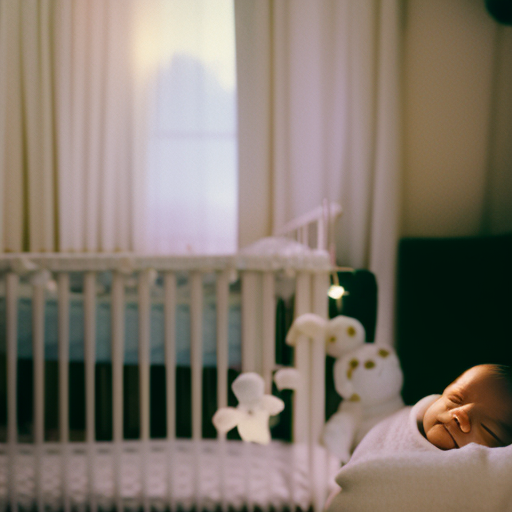
When setting up your little one’s sleeping arrangement, make sure to follow the instructions carefully for optimal use and peace of mind.
Setting up a crib involves several important steps to ensure your baby’s safety and comfort.
First, choose a sturdy crib that meets the latest safety standards. Look for certification labels like JPMA (Juvenile Products Manufacturers Association) or ASTM (American Society for Testing and Materials). Once you have selected the crib, assemble it according to the manufacturer’s instructions. Make sure all screws are tightened securely, and there are no loose parts.
Next, choose a crib mattress that fits snugly inside the crib with no gaps around the edges. The mattress should be firm and flat to provide support for your baby’s developing spine. Avoid using soft bedding, pillows, or stuffed animals in the crib as they can pose suffocation hazards.
Once the crib is set up and the mattress is in place, ensure that all sides of the crib are raised and locked securely before placing your baby inside. Regularly check for any loose or broken parts and replace them immediately.
Essential Features to Look for in a Newborn Baby Bed

Ensure that the crib you select for your little one has essential features like adjustable mattress heights and sturdy construction. When choosing a newborn baby bed, it is important to consider the comfort and safety of your precious bundle of joy. Here are some key factors to keep in mind:
-
Adjustable Mattress Heights: Look for a crib that offers multiple mattress height settings. This allows you to lower the mattress as your baby grows and becomes more mobile, ensuring their safety by preventing them from climbing out.
-
Sturdy Construction: A strong and durable crib is vital for the safety of your newborn. Check for solid wood or metal frames with secure hardware. Ensure there are no sharp edges or loose parts that could pose a risk to your baby.
-
Choosing the Right Mattress: Your baby’s mattress should be firm and supportive to promote healthy spinal development. Avoid soft or plush mattresses, as they can increase the risk of suffocation or SIDS (Sudden Infant Death Syndrome). Look for mattresses made from non-toxic materials and certified as safe for infants.
Selecting the best material: Opt for cribs made from non-toxic materials such as solid wood or metal, free from harmful chemicals like lead or phthalates. This ensures a safe sleeping environment for your little one.
Tips for Making the Newborn Baby Bed Comfortable
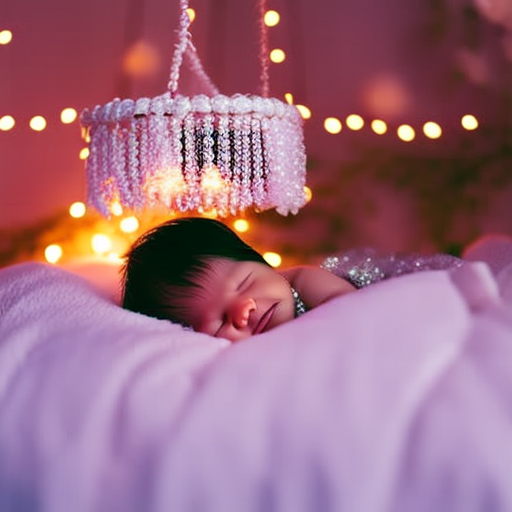
To make the crib more comfortable for your little one, consider adding soft bedding and a cozy blanket. Creating a cozy environment is essential for your newborn’s sleep and overall well-being.
When it comes to choosing the right bedding for newborns, there are a few factors to keep in mind.
Firstly, opt for materials that are gentle on your baby’s delicate skin. Look for bedding made from 100% cotton or organic fabrics. These materials are breathable, hypoallergenic, and will ensure optimal comfort for your little one.
Secondly, consider the thickness of the mattress pad or cover you choose. It should be firm enough to provide support but not too soft that it poses a suffocation risk. Additionally, make sure fitted sheets fit snugly over the mattress to prevent any loose fabric that could potentially be hazardous.
Lastly, avoid using pillows or plush toys in the crib until your baby is at least one year old. These items can increase the risk of suffocation or Sudden Infant Death Syndrome (SIDS).
Newborn Baby Bedding: What You Need to Know

Make sure you choose bedding made from 100% cotton or organic fabrics for optimal comfort. When it comes to newborn baby bedding, the material is key to ensuring your little one’s comfort and safety. Here are three things you need to know:
-
Breathability: Newborns have delicate skin that is prone to rashes and irritation. Opt for bedding made from breathable fabrics like cotton or organic materials. These materials allow air circulation, preventing overheating and keeping your baby cool and comfortable.
-
Softness: Your newborn will spend a significant amount of time in their bed, so it’s essential to choose bedding that is soft against their sensitive skin. Look for fabrics with a high thread count, as this indicates a smoother texture.
-
Hypoallergenic properties: Babies have developing immune systems and can be more susceptible to allergies and sensitivities. Choosing hypoallergenic materials for their bedding can help reduce the risk of irritation or allergic reactions.
When it comes to choosing a color for your newborn’s bed, consider going with calming shades like pastels or muted neutrals. These colors promote relaxation and create a soothing environment for your baby’s sleep.
Newborn Baby Bed Accessories for Added Convenience

For added convenience, consider opting for accessories like a bedside caddy or a diaper organizer to keep all your essentials within arm’s reach.
When it comes to newborn baby bed accessories, there are a few options that can make your life as a parent much easier. A bedside caddy is a great addition to have next to your baby’s bed. It allows you to store items such as diapers, wipes, and bottles in an organized manner. This way, you don’t have to constantly get up and search for these essential items throughout the night.
Another useful accessory is a diaper organizer. This handy tool can be attached to the side of your baby’s bed or crib, providing easy access to diapers and other changing supplies. With a diaper organizer, you can quickly grab what you need without having to rummage through drawers or bags.
When choosing newborn baby bed accessories, it’s important to prioritize safety measures. Make sure any attachments are securely fastened and do not pose a risk of falling onto the baby. Additionally, ensure that all materials used in the accessories are non-toxic and free from harmful chemicals.
When to Transition Your Newborn From a Baby Bed to a Crib

When it’s time to transition your little one from their cozy crib to a big kid bed, you’ll want to consider factors such as their size, mobility, and safety. Making this transition can be both exciting and nerve-wracking for parents, but with the right tips and signs of readiness, it can be a smooth process.
Here are some transitioning tips to help you navigate this important milestone:
-
Look for signs of readiness: Is your child showing an interest in climbing out of the crib? Are they able to follow simple instructions? These signs indicate that they may be ready for a big kid bed.
-
Choose the right bed: When selecting a new bed, consider the size and height that would work best for your child. A low-to-the-ground toddler bed or a twin-sized mattress on the floor can provide a safe and comfortable sleeping space.
-
Create a safe environment: Make sure to childproof the bedroom by securing furniture to the wall, covering electrical outlets, and removing any hazardous items within reach.
Frequently Asked Questions
How Much Does a Newborn Baby Bed Typically Cost?
Different types of newborn baby beds are available, and the cost can vary depending on factors such as brand, quality, and features. When choosing a bed, consider safety certifications and comfort for your little one.
Are There Any Age Restrictions for Using a Newborn Baby Bed?
There are no age restrictions for using a newborn baby bed. It is important to follow safety guidelines to ensure the well-being of your baby. Using a newborn baby bed has many benefits, such as promoting safe sleeping habits and reducing the risk of suffocation.
Can I Use a Newborn Baby Bed for Twins or Multiples?
Yes, you can use a newborn baby bed for twins or multiples. Using a newborn baby bed for multiples has several benefits, such as providing separate sleeping spaces and promoting safe sleep practices for each baby.
Are Newborn Baby Beds Portable and Easy to Travel With?
Newborn baby beds can be portable, making travel easier. However, they also have pros and cons. Portable beds allow for convenience, but stationary ones offer stability. Consider your needs and preferences when deciding which option is best for you.
Can I Use a Newborn Baby Bed for Co-Sleeping With My Baby?
Yes, you can use a newborn baby bed for co-sleeping with your baby. It offers the benefits of bonding and convenience. However, always consider alternative sleeping arrangements that prioritize safety and ensure a comfortable environment for both of you.
Conclusion
Congratulations on mastering the art of choosing and setting up the perfect newborn baby bed! Your little bundle of joy will sleep soundly and safely, thanks to your knowledge and expertise. Safety is key, so always consider the guidelines when selecting a bed for your precious newborn.
Don’t forget to add those adorable accessories for added convenience! Soon enough, you’ll find yourself transitioning from the baby bed to a crib as your little one grows.
Good luck on this exciting journey of parenthood!


